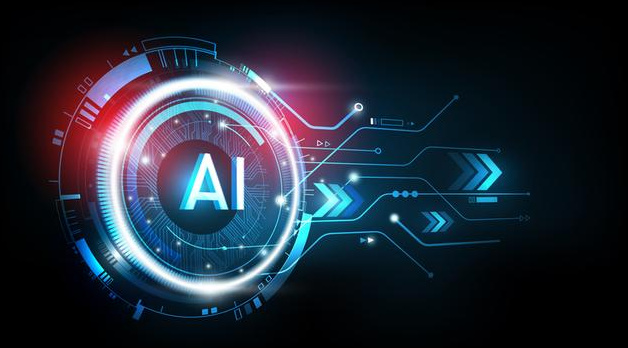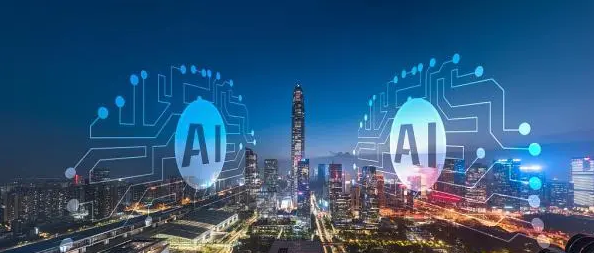Trend 5: Large model enabled cockpit, new battlefield for smart cockpit
The large model will give the intelligent cockpit a deep evolution
Embracing large model technology is a comprehensive and rapidly forming consensus in the intelligent vehicle industry. Since the advent of ChatGPT, the phenomenal-scale large-scale model product has attracted wide attention from all walks of life, and the industry has developed rapidly, leading a new industrial revolution.
A smart cockpit would be a good starting point for larger models. At present, the intelligent cabin, as a highly automated and informationized environment, has a large number of data information and service scenarios that can be mined and utilized, which is one of the core fields of technological innovation and competition of intelligent vehicles.
The large model provides more accurate recognition and understanding of the voice assistant in the car
Many car companies rely on speech recognition technology to achieve large model boarding. Because ChatGPT in large model technology products has obvious dialogue function and auxiliary attributes, it has a high degree of adaptability to the voice assistant module in the intelligent cabin.
First, large models provide more accurate and smooth speech recognition.
Secondly, large models have richer knowledge reserve and stronger semantic understanding ability.
In addition, by simulating human language expression and emotion, the large model can make the car voice assistant more natural and friendly.
The large model gives the intelligent cockpit deep multimodal interaction
The multi-modal large model technology can comprehensively process various types of data such as voice, vision, and touch, and further enhance the application of intelligent cockpit in the automotive field.
In speech recognition and natural language processing, large models can provide more accurate speech recognition functions
In the field of visual recognition and image processing, the large model can analyze and process the image data in the cockpit through deep learning and computer vision technology, identify the driver's facial expressions, gestures and other non-verbal interactive signals, and convert them into corresponding commands and feedback.
In terms of tactile perception and feedback, the large model can further enhance the response ability of the seat by analyzing tactile perception information such as seat sensor data and vibration signals.
The multi-modal large model technology fuses various types of sensors inside and outside the cabin, analyzes and synthesizes different types of data, senses the needs of passengers and drivers in an all-round way, and provides professional services.
Large models drive a more personalized, intelligent cockpit experience
The intelligent cabin provides thousands of personalized customized services through the use of AI large models.
Speech recognition personalization
Entertainment system personalization
Personalization of driver assistance
The large model makes the smart cabin more functional
Intelligent cabin environmental control function: The AI large model will integrate temperature and humidity sensors, air quality monitors and other data to sense the actual temperature, humidity and air conditions in the cockpit.
Intelligent cabin health management function: By combining passenger's personal health data and cabin environment information,AI grand models can provide personalized health management solutions.
Intelligent cabin entertainment and information service function :AI large model can combine historical records and user preference information to provide consumers with personalized music, movies, videos and other entertainment recommendations.
Vehicle condition monitoring and maintenance function :AI large model enables vehicle condition monitoring system to improve cabin maintenance efficiency.
There are still many difficulties and challenges in fully connecting large models to intelligent cabins
Large models need to challenge higher computing power requirements
There are still great challenges at the level of computing power support for large model access to intelligent cockpit.
(1) Large deep learning models usually contain billions or even tens of billions of parameters, and it is more difficult for enterprises to obtain massive training computing power.
(2) Large model applications require higher cloud computing power support.
(3) The demand for on-board computing power for large models has also increased significantly.
Algorithm development is also the difficulty of large model boarding
Large model access intelligent cockpit has high algorithm development requirements.
Firstly, multi-modal interaction puts forward higher requirements for algorithm technology. Multimodal interactions introduce larger volumes, higher quality, and more diverse data, and therefore need to optimize algorithm development and hardware configuration to improve model performance, generalization, and response speed.
Secondly, the goal of algorithm development is to ensure the real-time, stability and reliability of data information during driving.
Privacy is a top priority
As the complexity of smart cabins and user data increases, privacy and security issues will come into focus. The application of large model technology enables the intelligent cockpit to make use of multi-sensor data for multi-modal deep interaction.
The application of large models in the cockpit requires multi-channel data security. Getting bigger models into the car better will require addressing consumer concerns about privacy and security.
Car companies are actively promoting the landing of large models in the cabin
Under the general trend of automotive intelligent transformation, car companies have laid out large models to enter the intelligent cockpit. Car companies, partly through their own research and development, and partly in cooperation with technology companies, have promoted the access of large models to intelligent cabins and promoted the development of intelligent vehicle upgrades.
Trend six :ARHUD is accelerating and is expected to become a new screen for smart cars
ARHUD enables safer and richer smart car driving and interaction experiences
In-vehicle HUD is a technology that presents driving information. HUD is the abbreviation of Head-UpDisplay, that is, the head-up display system.
ARHUD, which brings richer information display and deeper intelligent driving experience, will become an important future development direction of vehicle HUD.
Under the background of the continuous in-depth development of intelligent driving and intelligent cockpit,ARHUD will become the technological evolution trend and final form of vehicle HUD in the future due to its larger imaging display area, more application experience scenarios, and richer and deeper human-computer interaction and assisted driving experience.
Compared with traditional HUD,ARHUD has a wider imaging area and better display capability.
Although the traditional CHUD and WHUD can project driving information and reduce the frequency of drivers looking down at the dashboard to a certain extent, their essence is still the simple migration of vehicle central control and instrument data, which cannot meet the increasing demand of consumers for intelligent cockpit and intelligent driving experience.
In-vehicle HUD is in a period of rapid popularity, and the growth structure is iterating towards ARHUD
Multiple factors such as demand growth and technological progress jointly drive the accelerated development of the ARHUD industry
Multiple factors work together to drive the rapid development of ARHUD. About 80% of the information perceived by humans is obtained by vision. As an updated and more advanced development form of vehicle HUD,ARHUD integrates virtual information with real scenes to bring richer information display and deeper human-computer interaction intelligent driving experience.
On the demand side,ARHUD provides a more intuitive "human-computer interaction" experience, and consumers have strong subjective willingness to pay. With the upgrading of consumer demand, the cognition of cars has changed from "transportation means" to "private third space", and cars are also given stronger interactive attributes.
Post time: Jan-22-2024










